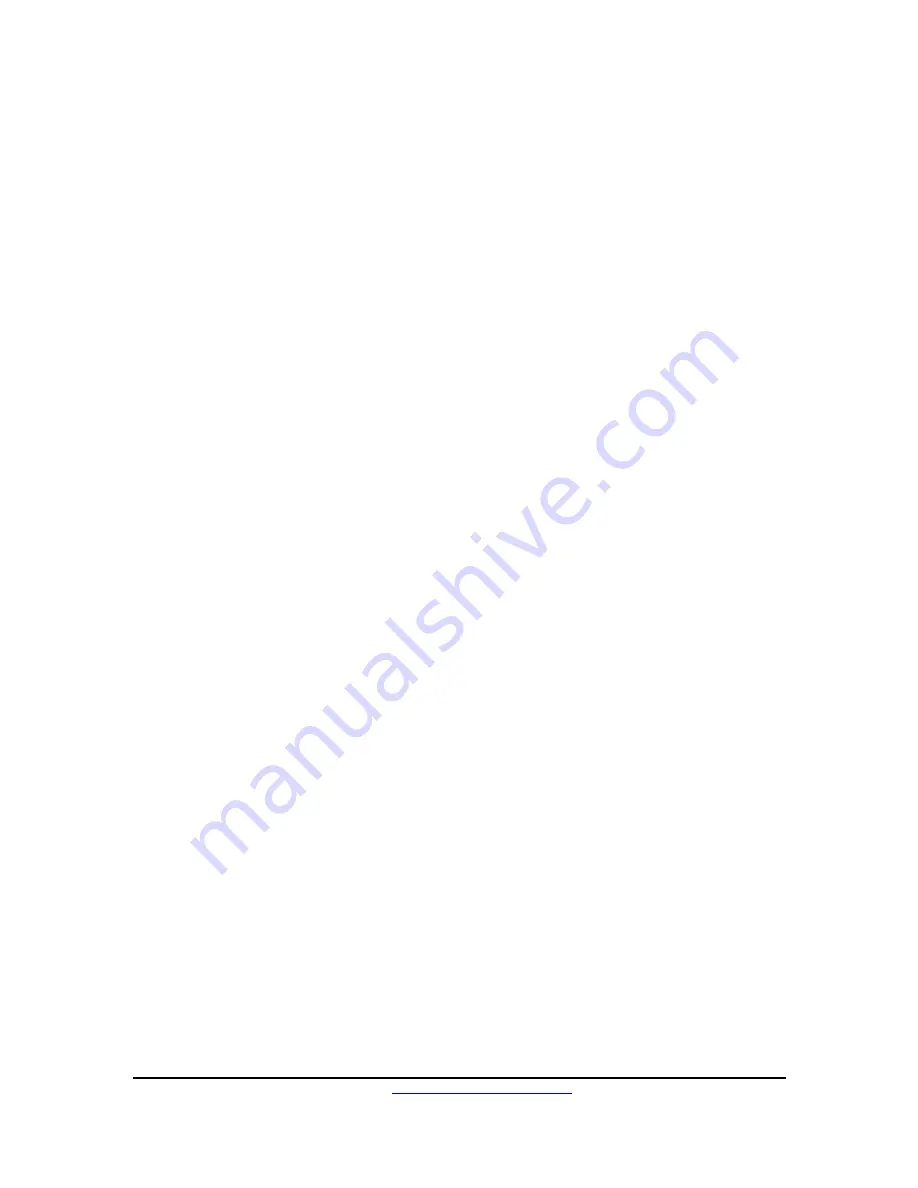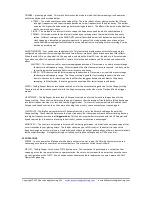
Copyright 2014 Henretta Engineering LLC
www.henrettaengineering.com
TRIGGER –
green toggle switch
. This switch determines the mode in which the filter sweeping circuit operates,
with three options as described below.
ATTACK – This mode operates as an envelope filter. The initial attack of your playing pushes the filter up
into high frequencies, and then it sweeps back down to low frequencies as the notes decay. The harder
you play, the higher the frequencies go before coming back down. The effect is like a wah-‐wah pedal that
tracks your playing dynamics.
CLOCK – This mode uses an internal clock to sweep the frequency up and down at a specified speed.
COMBO – This mode uses both the internal clock
and
your playing attack to manipulate the frequency
sweep. Different settings on the SENSITIVITY control (described below) will determine how much the
clock sweeping is disrupted by your playing attack. In general this mode provides a continued clock-‐
controlled filter sweeping effect that fades in as the sweep from your playing attack is working it’s way
back down or fading out.
SMOOTH/CHOPPY –
foot switch near the bottom left
. This foot switch provides easy access to two separately
configured clock-‐driven filter sweeping effects and two different modes of attack-‐driven envelope filter effects.
When the red LED is on, the pedal is in Choppy mode, and when the blue LED is on, the pedal is in Smooth mode.
Even when the effect is bypassed, these LED’s remain lit to let you know where you’ll be when you activate the
effect.
SMOOTH – This is best suited for slower sweeping speeds when in Clock mode, as it slowly moves through
the determined frequency range. At faster speeds, the effect becomes less pronounced. In Attack mode,
this setting gives the envelope filter slower response and decay.
CHOPPY – This is best suited for faster sweeping speeds when in Clock mode, as it quickly moves through
the determined frequency range. The Choppy setting is good for fast rotating speaker simulations or
tremolo-‐like sounds. At slower speeds, the effect has long gaps between quick blasts of frequency
sweeping. In Attack mode, this setting gives the envelope filter faster response and decay.
SPEED – The Big Zapper features two Speed controls, one for the Smooth setting and one for the Choppy setting.
These controls determine the speed at which the frequency sweep cycles when in the Clock and Combo trigger
modes.
HF SETPOINT – The Big Zapper features two HF Setpoint controls, one for the Smooth setting and one for the
Choppy setting. These controls determine the upper frequency that the sweep will reach before falling back down
into lower frequencies when in Clock and Combo trigger modes. This control is somewhat interactive with the LF
Setpoint and Speed controls (as is the nature of analog tone circuits), so experimentation is encouraged.
LF SETPOINT – The Big Zapper features two LF Setpoint controls, one for the Smooth setting and one for the
Choppy setting. These controls determine the lower frequency that the sweep will reach before climbing back up
into higher frequencies when in
all trigger modes
. This control is somewhat interactive with the HF Setpoint and
Speed controls (as is the nature of analog tone circuits), so experimentation is encouraged.
SENSITIVITY – This control is only active in Attack and Combo trigger modes. It determines how the envelope filter
circuit responds to your playing attack. The further clockwise you roll this control, the easier it is to push the
frequency range up with your playing. Humbuckers and other high output guitar pickups will work best at relatively
low Sensitivity settings. Vintage-‐style single coil pickups will require settings up near 3:00 on the dial.
SPECIFICATIONS
POWER -‐ You can power the Big Zapper with either an external power supply (9 VDC) with the commonly used
center-‐negative barrel connector or an internal battery. The maximum current draw is 20mA.
CIRCUIT -‐ The Big Zapper circuit uses a TL072 dual op amp. This component is positioned in a socket to allow
swapping with other op amps for sonic experimentation. Be sure to only swap with op amps that have the same
pin configuration as the TL072. If you have questions about acceptable replacement op amps, please
contact
Henretta Engineering.


